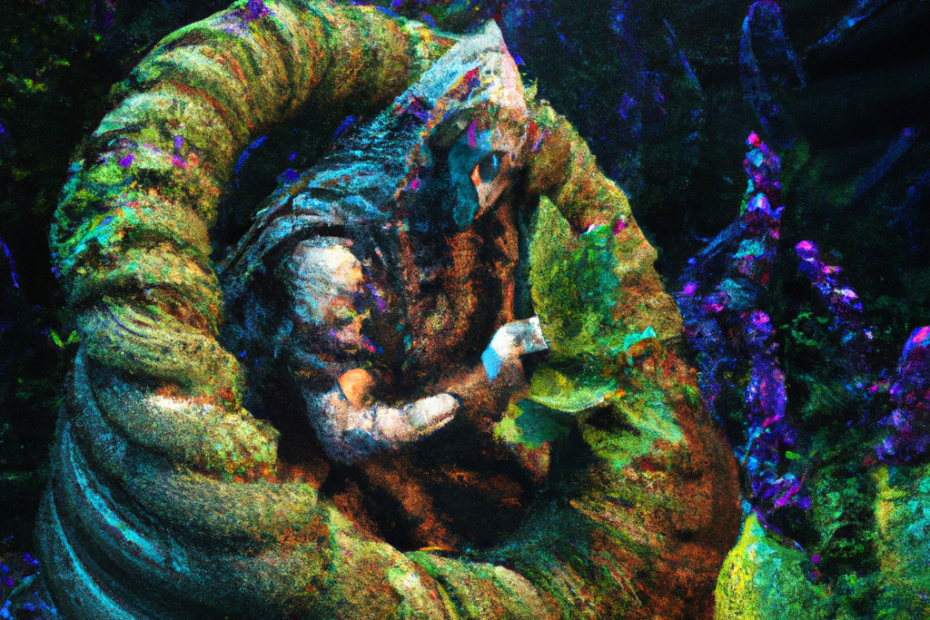Salvia divinorum, a perennial herb belonging to the mint family, requires specific light and temperature conditions to thrive. Understanding the light and temperature requirements is crucial for successful cultivation and ensuring the plant’s overall health. In this comprehensive guide, we will delve into the essential factors affecting the growth of Salvia divinorum, including light and temperature.
We will explore the impact of natural and artificial light, optimal light intensity, light schedules for indoor cultivation, as well as the ideal temperature range and its effects on the plant. We will discuss the creation of an ideal growing environment using grow lights, heat sources, and humidifiers. We will highlight the signs of poor light and temperature conditions and offer insights on adjusting these factors for different stages of growth. Whether you’re a novice or experienced grower, this article is your go-to resource for mastering the art of providing the perfect light and temperature conditions for Salvia divinorum.
What Is Salvia Divinorum?
Salvia Divinorum, commonly known as ‘diviner’s sage,’ is a psychoactive plant native to the cloud forest regions of Mexico. It has gained popularity for its unique effects and is often cultivated for personal use or research purposes.
Native to the cloud forest regions of Mexico, Salvia Divinorum has been revered for its potent psychoactive properties. This plant is known for inducing intense short-term hallucinogenic experiences when consumed. Cultivating Salvia Divinorum requires specific environmental conditions such as high humidity and shaded areas. It thrives in well-drained, moist soil and warmer temperatures. Due to its delicate nature, maintaining consistent moisture levels and avoiding direct sunlight is essential for its growth. The significance of Salvia Divinorum in its cultivation lies in providing the necessary conditions to foster its psychoactive potential.
What Are The Light Requirements For Salvia Divinorum?
Salvia Divinorum has specific light requirements that play a crucial role in its growth and development. Whether grown indoors or outdoors, understanding and providing the right light conditions is essential for the optimal cultivation of this unique plant.
Indoor cultivation of Salvia Divinorum requires a carefully managed artificial light source to mimic the intensity and duration of sunlight. This is crucial as indoor environments typically have less direct natural light.
On the other hand, outdoor cultivation relies on the natural rhythm of the sun, with the plant’s light requirements being fulfilled by the varying intensity and duration of sunlight throughout the day. Finding the right balance of natural and artificial light is key to supporting the plant’s photosynthetic processes, which in turn influences its growth, health, and environmental adaptation.
Natural Light vs Artificial Light
The choice between natural and artificial light sources is a critical decision when providing the optimal light conditions for Salvia Divinorum. This choice varies depending on whether the cultivation is indoors or outdoors, and it significantly influences the plant’s ability to thrive and adapt to its environment.
Natural light, while abundant and rich in essential wavelengths, may not always be accessible in indoor cultivation setups. In contrast, artificial light sources can be tailored to provide specific spectrums and intensity, ensuring consistent and targeted illumination. This adaptability is especially beneficial for indoor cultivation, allowing growers to mimic outdoor light conditions.
Outdoor cultivation can harness the full spectrum of natural light, promoting a more natural growth pattern and aiding in the plant’s overall adaptation to its environment.
Optimal Light Intensity
Understanding the optimal light intensity for Salvia Divinorum is essential for ensuring its successful growth and adaptation to its surroundings. Whether grown indoors or outdoors, maintaining the right light intensity is crucial for the plant’s thriving and overall health.
This unique plant, known for its psychoactive properties, has specific light requirements that directly influence its growth and environmental adaptability. For indoor cultivation, providing adequate artificial lighting, such as LED or fluorescent lights, is necessary to mimic the natural sunlight conditions. Conversely, outdoor cultivation demands attention to the exposure of direct sunlight to avoid overexposure, which can lead to leaf scorching. The proper balance of light intensity not only fosters healthy growth but also encourages the plant’s remarkable adaptive capabilities to various environmental conditions.
Light Schedule for Indoor Cultivation
Establishing a suitable light schedule is crucial for the indoor cultivation of Salvia Divinorum. A consistent and well-regulated light cycle is essential for replicating the plant’s natural habitat and promoting its healthy growth and development.
This careful management of light is vital for enabling the plant to undergo the processes of photosynthesis and photoperiodism, both of which are fundamental for its overall well-being. By providing the appropriate duration and intensity of light, growers can ensure optimal conditions for Salvia Divinorum to thrive. Maintaining a proper light schedule helps stabilize the plant’s internal clock, ensuring it aligns with natural day-night rhythms, which greatly influences the plant’s health and suitability for its environment.
What Are The Temperature Requirements For Salvia Divinorum?
Salvia Divinorum thrives within specific temperature ranges, and understanding its temperature requirements is vital for successful cultivation. Whether grown indoors or outdoors, maintaining the ideal temperature is crucial for the plant to adapt and flourish in its environment.
The ideal temperature for Salvia Divinorum falls between 65-75°F (18-24°C), mimicking its native cloud forest habitat. Extreme temperature variations can have a detrimental impact on the plant, causing wilting, leaf discoloration, or stunted growth. This underscores the significance of temperature stability for the plant’s adaptation and survival.
Maintaining the right temperature plays a role in stimulating the production of the plant’s active compounds, ultimately affecting its potency and therapeutic properties.”
Ideal Temperature Range
Maintaining the ideal temperature range is paramount for the successful cultivation of Salvia Divinorum. Whether indoors or outdoors, ensuring that the plant is within its preferred temperature range is crucial for its overall health, growth, and survival.
Salvia Divinorum thrives best in temperatures ranging between 70-85°F (21-29°C). For indoor cultivation, it’s essential to monitor and regulate the temperature using climate control systems, while also considering factors such as humidity and air circulation.
In outdoor settings, the plant may require shade during extremely hot weather to prevent wilting. The adaptability of Salvia Divinorum to varying environmental conditions makes it imperative for growers to create an optimal microclimate, ensuring that the plant can flourish and achieve its full potential.
Effects of Temperature Variations
Temperature variations can significantly impact the growth and cultivation of Salvia Divinorum. Understanding the effects of these variations is crucial for adapting the plant to different environmental conditions and ensuring its sustained success.
It is essential to consider the optimal temperature range for Salvia Divinorum, as both excessively high and low temperatures can hinder its growth. Extreme cold can cause damage to the plant, while excessive heat can lead to wilting and dehydration. Temperature variations can also affect the potency of the plant’s active compounds.
Cultivators must carefully monitor and regulate temperature to maintain the desired characteristics and ensure the plant’s ability to thrive in diverse environments.
How To Create The Ideal Growing Environment For Salvia Divinorum?
Creating the ideal growing environment for Salvia Divinorum involves meticulous attention to its specific requirements, including temperature, light, and humidity. Whether indoors or outdoors, providing the optimal conditions is essential for the plant’s successful cultivation and flourishing.
Maintaining a consistent temperature range of 70-85°F (21-29°C) is crucial, as fluctuations can stress the plant. Ensuring the right balance of natural or artificial light and darkness is imperative, as Salvia Divinorum thrives in partial shade. Maintaining high humidity levels of 50-80% aids in mimicking the plant’s native environment, supporting healthy growth and vitality. By integrating these key elements, growers can create an environment optimized for the flourishing of Salvia Divinorum.
Using Grow Lights
In indoor cultivation, the use of grow lights is essential for meeting the light requirements of Salvia Divinorum. Properly selected and positioned grow lights are instrumental in providing the necessary light intensity and cycle for the plant’s healthy growth and development.
This is because grow lights are designed to simulate natural sunlight and are crucial for photosynthesis, a process vital for plant growth. When selecting grow lights, it’s important to consider factors such as light spectrum, intensity, and duration.
The positioning of the grow lights is equally significant as it ensures even distribution of light across the entire plant canopy, promoting consistent growth. The right combination of light and temperature can also impact flowering and fruiting, making it essential to tailor the grow light setup to the specific needs of Salvia Divinorum.
Using a Heat Source
Utilizing a reliable heat source is crucial for maintaining the ideal temperature in indoor cultivation of Salvia Divinorum. The provision of consistent and regulated warmth is essential for the plant’s adaptation and sustained growth within an indoor environment.
It is imperative to carefully select the appropriate heat source that aligns with the specific temperature requirements of Salvia Divinorum. Whether employing heating mats, ceramic heaters, or heat lamps, the controlled application of heat plays a fundamental role in fostering optimal growing conditions.
The careful monitoring and adjustment of the heat source are essential to ensure a stable and favorable environment for the plant’s development. By efficiently managing the temperature through a suitable heat source, growers can effectively support the overall health and vitality of Salvia Divinorum.
Using a Humidifier
In indoor cultivation, the use of a humidifier is essential for controlling and maintaining the right humidity levels for Salvia Divinorum. Proper humidity regulation is critical for the plant’s growth, adaptation, and overall well-being in an indoor setting.
The controlled humidity provided by a humidifier plays a significant role in fostering suitable conditions for Salvia Divinorum. This ensures the plant’s ability to thrive in an environment that mimics its natural habitat. By maintaining optimal humidity levels, growers can support the plant’s physiological processes, such as transpiration and nutrient uptake, leading to robust and healthy growth.
Maintaining the right humidity helps in preventing issues like mold and mildew, ultimately promoting a thriving indoor cultivation environment.
What Are The Signs Of Poor Light And Temperature Conditions For Salvia Divinorum?
Identifying the signs of poor light and temperature conditions is crucial for addressing potential issues in the cultivation of Salvia Divinorum. Recognizing these signs is essential for maintaining the plant’s health, growth, and overall vitality.
Insufficient light can result in stunted growth, yellowing of leaves, and decreased flowering in Salvia Divinorum. On the other hand, extreme temperatures, whether too hot or too cold, can lead to wilting, leaf burn, and reduced resilience to pests and diseases. It’s important to monitor these factors closely as they directly impact the plant’s ability to carry out vital processes such as photosynthesis and transpiration. Creating an environment with optimal light and temperature levels is essential for the successful cultivation of Salvia Divinorum.
Wilting Leaves
Wilting leaves can be a clear indication of poor light and temperature conditions affecting Salvia Divinorum. Monitoring and addressing this sign promptly is essential for maintaining the plant’s health and promoting its recovery.
When the light levels are insufficient, the process of photosynthesis, which is crucial for the plant’s energy production, can be hindered. As a result, the plant may struggle to thrive and exhibit signs of stress, such as wilting leaves.
Inadequate temperature can further exacerbate this issue, as it can disrupt the plant’s metabolic processes and lead to dehydration. Therefore, creating an optimal environment with adequate light and temperature is vital for ensuring the overall well-being and growth of Salvia Divinorum.
Yellowing Leaves
Yellowing leaves can indicate adverse light and temperature conditions affecting Salvia Divinorum. Recognizing and addressing this symptom is essential for restoring the plant’s health and vitality.
Inadequate light can lead to diminished photosynthesis, impacting the plant’s ability to produce energy and vital nutrients. Similarly, extreme temperature fluctuations can stress the plant, hindering its growth and environmental adaptation. By observing the yellowing leaves, one can assess and optimize the light exposure and temperature levels, providing a conducive environment for Salvia Divinorum to thrive. Maintaining optimal conditions is crucial for promoting healthy foliage, robust growth, and overall well-being of the plant.
Stunted Growth
Stunted growth can be a clear consequence of poor light and temperature conditions affecting Salvia Divinorum. Recognizing and addressing this issue is essential for promoting the plant’s recovery and sustained development.
Insufficient light and improper temperature can hinder the plant’s ability to photosynthesize and regulate essential processes, leading to stunted growth. These unfavorable conditions disrupt the plant’s metabolism and overall health, making it more susceptible to diseases and pests.
Stunted growth can significantly impact the plant’s cultivation process, reducing its yield and quality. By ensuring optimal light and temperature levels, growers can create a favorable environment for Salvia Divinorum, enabling it to thrive and reach its full potential.
Leaf Burn
Leaf burn is a notable indication of poor light and temperature conditions affecting Salvia Divinorum. Identifying and addressing this issue promptly is essential for preserving the plant’s health and vitality.
When left unattended, leaf burn can impede the plant’s ability to undergo photosynthesis, leading to stunted growth and diminished overall health. The impact extends beyond the individual plant, affecting the entire environment of the cultivation area. It serves as a crucial indicator prompting adjustments in the light and temperature settings, ensuring optimal conditions for Salvia Divinorum’s development.
By recognizing and rectifying leaf burn, cultivators can maintain an ideal environment, allowing the plant to flourish and thrive.
How To Adjust Light And Temperature For Different Stages Of Growth?
Adjusting light and temperature for different stages of growth is crucial for promoting the healthy development of Salvia Divinorum. Understanding the specific needs of the plant during each stage is essential for ensuring its successful cultivation and flourishing.
During the seedling stage, providing ample warmth and gentle, indirect light is necessary to encourage strong root formation and initial leaf development. As the plant transitions into the vegetative stage, it requires more intense light for robust foliage growth, along with slightly lower temperatures.
In the flowering stage, adjusting the light to mimic natural daylight hours and maintaining consistent, slightly cooler temperatures can optimize the production of flowers and essential oils in the Salvia Divinorum. A well-managed balance of light and temperature throughout the growth stages can significantly impact the plant’s overall health and yield.
Seedling Stage
The seedling stage of Salvia Divinorum requires specific light and temperature adjustments to promote its healthy development. Providing the right conditions during this crucial stage is essential for establishing a strong foundation for the plant’s growth and adaptation.
Proper lighting is crucial for seedling development, with a focus on providing bright, indirect light for about 16 hours a day, mimicking its natural habitat. Maintaining a consistent temperature between 70-85°F is equally vital, ensuring the optimal metabolic and growth processes. These adjustments create an ideal environment for the seedling to develop robust roots and sturdy stems, setting the stage for successful acclimatization and flourishing growth as it transitions to the next growth stages.
Vegetative Stage
The vegetative stage of Salvia Divinorum requires distinct light and temperature adjustments to support its robust growth and environmental adaptation. Providing the optimal conditions during this stage is essential for preparing the plant for its flowering phase and overall development.
During the vegetative stage, it is crucial to provide the plant with 18-24 hours of light per day, preferably from a full spectrum grow light that simulates natural sunlight. The temperature should be maintained between 70-80°F during the day and slightly lower at night. These conditions stimulate photosynthesis, enhance nutrient uptake, and promote sturdy stem and leaf formation, ensuring the plant’s readiness for the subsequent flowering stage.
Flowering Stage
The flowering stage of Salvia Divinorum demands precise light and temperature adjustments to facilitate its successful flowering and overall maturation. Providing the right conditions during this critical stage is essential for promoting the plant’s health and vitality.
This stage requires a shift from the vegetative growth conditions. During flowering, the plant benefits from a consistent 12-hour light cycle, mimicking the decreasing daylight hours of late summer and early fall. The temperature should be maintained between 65-75°F (18-24°C) during the day and slightly cooler at night to simulate natural conditions. A well-maintained environment ensures the plant can adapt and focus its energy on producing healthy flowers, leading to a successful and prolific blooming phase.
Frequently Asked Questions
What are the light and temperature requirements for growing Salvia Divinorum?
Salvia Divinorum plants need bright, indirect light and warm temperatures to thrive. They should be kept in a room with temperatures between 70-85°F (21-29°C) and placed near a window where they can receive plenty of sunlight.
Can Salvia Divinorum tolerate low light conditions?
No, Salvia Divinorum plants require bright, indirect light to stay healthy. They can become leggy and weak if they do not receive enough light, and they may even start to lose their vibrant color.
How often should I water my Salvia Divinorum plant?
Salvia Divinorum plants should be watered regularly, but not overwatered. The soil should be kept consistently moist, but not waterlogged. It is important to allow the top inch of soil to dry out before watering again.
Can Salvia Divinorum tolerate high temperatures?
Salvia Divinorum plants can tolerate temperatures up to 90°F (32°C), but they will start to wilt and suffer if they are consistently exposed to such high temperatures. It is best to keep them in a room with temperatures between 70-85°F (21-29°C).
What happens if my Salvia Divinorum plant gets too cold?
If a Salvia Divinorum plant is exposed to temperatures below 50°F (10°C), it can suffer from cold damage and may even die. It is important to keep the plant in a warm environment to prevent this from happening.
Can I use artificial light for my Salvia Divinorum plant?
Yes, artificial light can be used for Salvia Divinorum plants if natural sunlight is not available. Full spectrum grow lights or fluorescent lights are recommended for indoor growing, and they should be placed 6-12 inches above the plant for 12-14 hours a day.
John Marston, a seasoned writer since 2009, has penned hundreds of articles on Salvia Divinorum across the web. As a full-time writer at a prominent online salvia retailer, he continues to contribute valuable insights, combining expertise and passion to unravel the diverse facets of Salvia Divinorum. Beyond his writing, John serves as a budtender in the cannabis industry.




